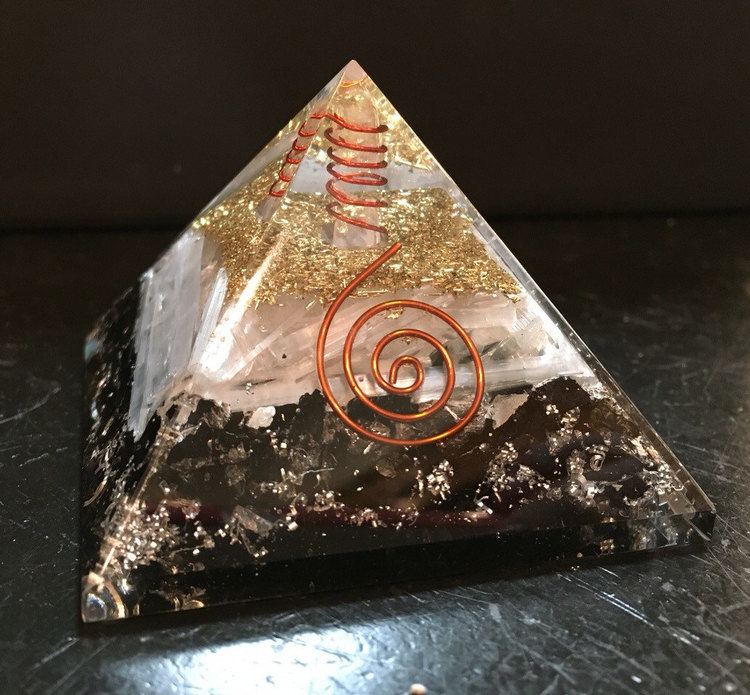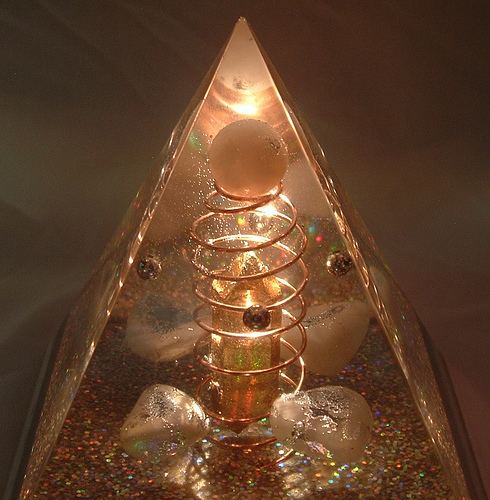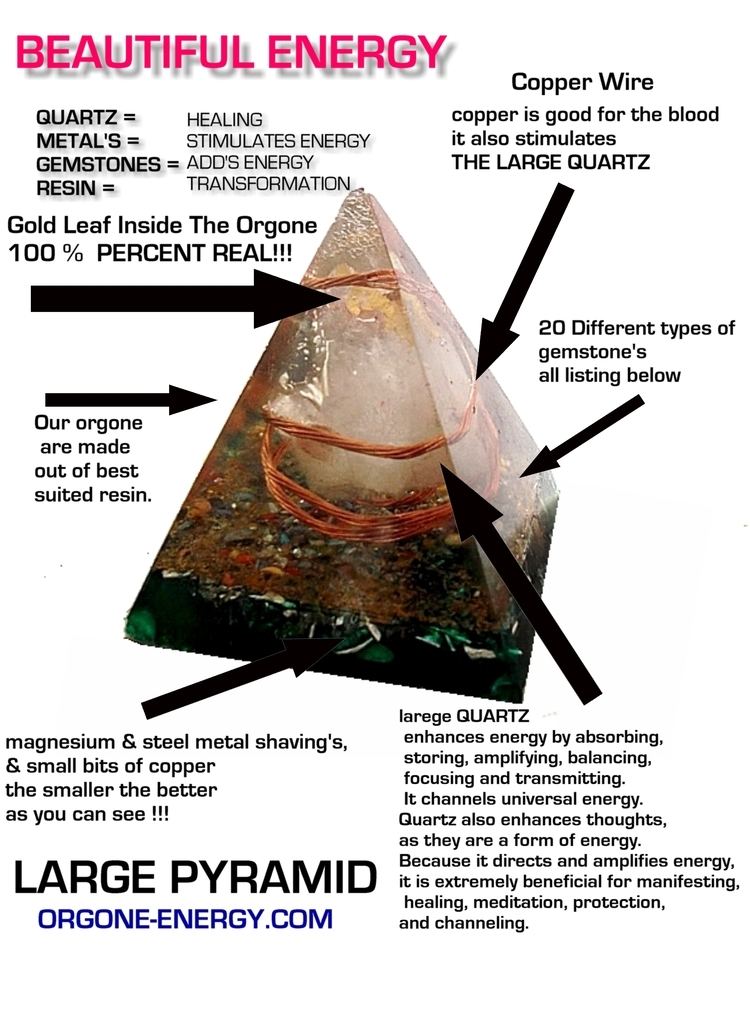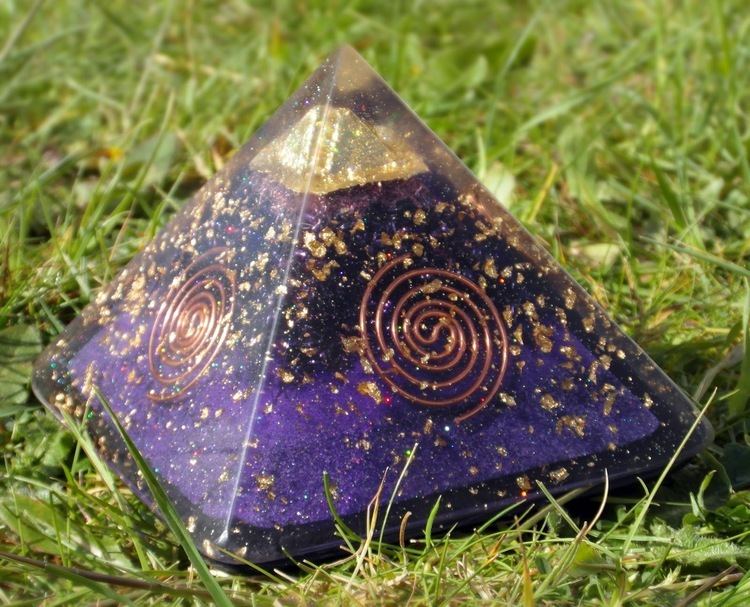 | ||
Orgone full performance live on kexp
Orgone is a pseudoscientific and spiritual concept described as an esoteric energy or hypothetical universal life force, originally proposed in the 1930s by Wilhelm Reich. As developed by Reich's student Charles Kelley after Reich's death in 1957, orgone was conceived as the anti-entropic principle of the universe, a creative substratum in all of nature comparable to Mesmer's animal magnetism (1779), to the Odic force (1845) of Carl Reichenbach and to Henri Bergson's élan vital (1907). Orgone was seen as a massless, omnipresent substance, similar to luminiferous aether, but more closely associated with living energy than with inert matter. It could allegedly coalesce to create organization on all scales, from the smallest microscopic units—called "bions" in orgone theory—to macroscopic structures like organisms, clouds, or even galaxies.
Contents
- Orgone full performance live on kexp
- History
- Evaluation
- In popular culture
- William S Burroughs
- Jack Kerouac
- JD Salinger
- Orson Bean
- Duan Makavejev
- Hawkwind
- Woody Allen
- Kate Bush
- Peter Brock
- Devo
- Evelyn Waugh
- Warren Leight
- Hal Duncan
- Peep Show
- Lupin the Third
- Redline
- Captain Earth
- References

Reich stated that deficits or constrictions in bodily orgone were at the root of many diseases, much as deficits or constrictions in the libido could produce neuroses in Freudian theory. Reich founded the Orgone Institute ca. 1942 to pursue research into orgone energy after he immigrated to the US in 1939, and used it to publish literature and distribute material relating to the topic for more than a decade. Reich designed special "orgone accumulators"—devices ostensibly collecting and storing orgone energy from the environment—for improvement of general health or even for weather control. Ultimately, the U.S. Food and Drug Administration (FDA) obtained a federal injunction barring the interstate distribution of orgone-related materials, on the grounds that Reich and his associates were making false and misleading claims, and later jailed Reich and destroyed all orgone-related materials at the institute after Reich violated the injunction. Reich rescinded the claim that accumulator could provide orgastic potency, but this was not enough to stop the action.

The National Center for Complementary and Integrative Health lists orgone as a type of "putative energy". There is no empirical support for the concept of orgone in medicine or the physical sciences, and research into the concept ceased with the end of the Institute.

History

The concept of orgone belongs to Reich's later work, after he immigrated to the US. Reich's early work was based on the Freudian concept of the libido, though influenced by sociological understandings with which Freud disagreed but which were to some degree followed by other prominent theorists such as Herbert Marcuse and Carl Jung. While Freud had focused on a solipsistic conception of mind in which unconscious and inherently selfish primal drives (primarily the sexual drive, or libido) were suppressed or sublimated by internal representations (cathexes) of parental figures (the superego), for Reich libido was a life-affirming force repressed by society directly. For example, in one of his better known analyses Reich observes a workers' political rally, noting that participants were careful not to violate signs that prohibited walking on the grass; Reich saw this as the state co-opting unconscious responses to parental authority as a means of controlling behavior. He was expelled from the Institute of Psycho-analysis because of these disagreements over the nature of the libido and his increasingly political stance. He was forced to leave Germany very soon after Hitler came to power.

Reich took an increasingly bioenergetic view of libido, perhaps influenced by his tutor Paul Kammerer and another biologist, Otto Heinrich Warburg. In the early 20th century, when molecular biology was in its infancy, developmental biology in particular still presented mysteries that made the idea of a specific life energy respectable, as was articulated by theorists such as Hans Driesch. As a psycho-analyst Reich aligned such theories with the Freudian libido, while as a materialist he believed such a life-force must be susceptible to physical experiment.
He wrote in his best known book, The Function of the Orgasm: "Between 1919 and 1921, I became familiar with Driesch's 'Philosophie des Organischen' and his 'Ordnungslehre'... Driesch's contention seemed incontestable to me. He argued that, in the sphere of the life function, the whole could be developed from a part, whereas a machine could not be made from a screw..... However, I couldn't quite accept the transcendentalism of the life principle. Seventeen years later I was able to resolve the contradiction on the basis of a formula pertaining to the function of energy. Driesch's theory was always present in my mind when I thought about vitalism. The vague feeling I had about the irrational nature of his assumption turned out to be justified in the end. He landed among the spiritualists."
The concept of orgone was the result of this work in the psycho-physiology of libido. After his migration to the US, Reich began to speculate about biological development and evolution, and then branched out into much broader speculations about the nature of the universe. This led him to the conception of "bions": self-luminescent sub-cellular vesicles that he believed were observable in decaying materials, and presumably present universally. Initially he thought of bions as electrodynamic or radioactive entities, as had the Ukrainian biologist Alexander Gurwitsch, but later came to the conclusion that he had discovered an entirely unknown but measurable force, which he then named "orgone", a pseudo-Greek formation probably from org- "impulse, excitement" as in org-asm, plus -one as in ozone (the Greek neutral participle, virtually *ὄργον, gen.: *ὄργοντος).
For Reich, neurosis became a physical manifestation he called "body armor"—deeply seated tensions and inhibitions in the physical body that were not separated from any mental effects that might be observed. He developed a therapeutic approach he called vegetotherapy that was aimed at opening and releasing this body armor so that free instinctive reflexes—which he considered a token of psychic well-being—could take over.
Evaluation
Orgone was closely associated with sexuality: Reich, following Freud, saw nascent sexuality as the primary energetic force of life. The term itself was chosen to share a root with the word orgasm, which both Reich and Freud took to be a fundamental expression of psychological health. This focus on sexuality, while acceptable in the clinical perspective of Viennese psychoanalytic circles, scandalized the conservative American public even as it appealed to countercultural figures like William S. Burroughs and Jack Kerouac.
In at least some cases, Reich's experimental techniques do not appear to have been very careful, or to have taken precautions to remove experimental bias. Reich was concerned with experimental verification from other scientists. Albert Einstein agreed to participate, but thought Reich's research lacked scientific detachment and experimental rigor; and concluded that the effect was simply due to the temperature gradient inside the room. "Through these experiments I regard the matter as completely solved," he wrote to Reich on 7 February 1941. Upon further correspondence from Reich, Einstein replied that he could not devote any further time to the matter and asked that his name not be misused for advertising purposes.
Orgone and its related concepts were quickly denounced in the post-World War II American press. Reich and his students were seen as a "cult of sex and anarchy," at least in part because orgone was linked with the title of his book The Function of the Orgasm, and this led to numerous investigations as a communist and denunciation under a wide variety of other pretexts. He was, as the New York Times later put it, "much maligned". The psychoanalytical community of the time saw his approach to healing diseases as quackery of the worst sort, partly because of his comments about UFOs. In 1954, the U.S. Food and Drug Administration successfully sought an injunction to prevent Reich from making medical claims relating to orgone, which (among other stipulations) prevented him from shipping "orgone devices" across state lines. Reich defied the order and was jailed, and the FDA took that opportunity to destroy any of Reich's books which mentioned orgone, along with research materials and devices.
Some of Reich's observations have been replicated by other researchers. Stefan Müschenich, in his Master's thesis, demonstrated effects of orgone accumulators on test subjects in keeping with Reich's original descriptions, while subjects exposed to a known "dummy box" showed no such effects. As of 2007, the National Institutes of Health database PubMed, and the Web of Science database, contained only 4 or 5 peer-reviewed scientific papers published (since 1968) dealing with orgone therapy.
Some psychotherapists and psychologists practicing various kinds of Body Psychotherapy and Somatic Psychology have continued to use Reich's proposed emotional-release methods and character-analysis ideas.
In popular culture
Orgone was used in the writings of several prominent beat generation authors, who were fascinated by both its purported curative and sexual aspects. To that extent, it is heavily associated with the 1950s counterculture movement, though it did not carry over into the more extensive movements of the 1960s.
William S. Burroughs
William S. Burroughs was a major proponent of orgone research, who often included it as part of the surreal imagery in his novels. Orgone interested Burroughs particularly because he believed that it could be used to ease or alleviate "junk sickness"—a popular term for heroin withdrawal. This fitted well in the context of his novels, which were usually narrative recreations of his own experiences with narcotics and the Beat life.
Burroughs explicitly compares "kicking the habit" to cancer in the novel Junky, and ties it to the use of orgone accumulators. He writes:
Cancer is rot of tissue in a living organism. In junk sickness the junk dependent cells die and are replaced. Cancer is a premature death process. The cancer patient shrinks. A junkie shrinks—I have lost up to fifteen pounds in three days. So I figure if the accumulator is a therapy for cancer, it should be therapy for the after-effects of junk sickness.
At the time that Burroughs was writing, orgone accumulators were only available from Reich's Orgone Institute in New York, offered for a ten dollar per month donation. Burroughs built his own instead, substituting rock wool for the sheet iron, but believed it still achieved the desired effect. Burroughs writes about what occurred once he started using the accumulator:
Constant use of junk of the years has given me the habit of directing attention inward. When I went into the accumulator and sat down I noticed a special silence that you sometimes feel in deep woods, sometimes on a city street, a hum that is more rhythmic vibration than a sound. My skin prickled and I experienced an aphrodisiac effect similar to good strong weed. No doubt about it, orgones are as definite a force as electricity. After using the accumulator for several days my energy came back to normal. I began to eat and could not sleep more than eight hours. I was out of the post cure drag.
Jack Kerouac
In Jack Kerouac's popular novel On the Road, the orgone accumulator was treated more as another type of drug than as a medical device: primarily a stimulant, with strong sexual overtones. When Sal Paradise visits Old Bull Lee in the novel (characters representing Kerouac and Burroughs, respectively), Lee's orgone accumulator is described as follows:
Say, why don’t you fellows try my orgone accumulator? Put some juice in your bones. I always rush up and take off ninety miles an hour for the nearest whorehouse, hor-hor-hor!' said Bull Lee… The orgone accumulator is an ordinary box big enough for a man to sit inside on a chair: a layer of wood, a layer of metal, and another layer of wood gather in orgones from the atmosphere and hold them captive long enough for a human to absorb more than a usual share. According to Reich, orgones are vibratory atmospheric atoms of the life-principle. People get cancer because they run out of orgones. Old Bull thought his orgone accumulator would be improved if the wood he used was as organic as possible, so he tied bushy bayou leaves and twigs to his mystical outhouse. It stood there in the hot, flat yard, an exfoliate machine clustered and bedecked with maniacal contrivances. Old Bull slipped off his clothes and went to sit and moon over his navel.
The 2012 film of Kerouac's novel includes the scene described above, but adds a small window in the accumulator and a funnel to breathe through.
J.D. Salinger
According to his daughter, J.D. Salinger would sometimes use an orgone accumulator, among an assortment of other alternative health regimens.
Orson Bean
Noted American actor and raconteur Orson Bean was once a proponent of orgone therapy and published a well-received book about it entitled Me and the Orgone.
Dušan Makavejev
Dušan Makavejev opened his 1971 satirical film W.R.: Mysteries of the Organism with documentary coverage of Reich and his development of orgone accumulators, combining this with other imagery and a fictional sub-plot in a collage mocking sexual and political authorities. Scenes include one of only "ten or fifteen orgone boxes left in the country" at that time.
Hawkwind
British space rockers Hawkwind released the track "Orgone Accumulator" as the first track on side three of the 1972 live album, Space Ritual.
I've got an Orgone Accumulator
And it makes me feel greater
I'll see you sometime later
When I'm through with my Accumulator
It's no social integrator
It's a one man isolator
It's a back brain stimulator
It's a cerebral vibrator
...But an Orgone Accumulator
Is a superman creator
Woody Allen
Woody Allen's 1973 comedy science fiction movie Sleeper features an orgasmatron—a cylinder big enough to hold one or two people, containing some future technology that rapidly induces orgasms. This is required as almost all people in the movie's universe are impotent or frigid, although males of Italian descent are considered the least impotent of all groups. It has been suggested that the orgasmatron was a parody of Reich's orgone accumulator.
Kate Bush
The song "Cloudbusting" by British singer Kate Bush describes Reich's arrest and incarceration through the eyes of his son, Peter. The 1985 video, in which Donald Sutherland plays Wilhelm Reich during his research and subsequent arrest, features a Foucault pendulum as an alternative method of demonstrating the rotational motion of the earth to prove the heretical view that the Earth was not the centre of the Universe. The Foucault pendulum in this video simultaneously connects and contrasts the disgraced Wilhelm Reich to both of the respected Foucaults, the scientist, Jean Bernard Léon Foucault and the philosopher, Michel Foucault, who had died one year prior to the video in 1984.
Peter Brock
Peter Brock was one of Australia's best-known and most successful motor racing drivers. He publicly supported and fit all Holden Dealer Team specials with a device called the "Energy Polariser" which it was claimed improved the performance and handling of vehicles through "aligning the molecules" using orgone energy.
Devo
The new wave '80s band Devo claimed that their iconic energy dome design was used to recycle the wasted orgone energy that flows from a person's head. Devo cofounder Mark Mothersbaugh has said:
We did the red energy dome, which was useful—besides being an icon -- it was a useful icon. You probably know this very well, but your orgone energy goes out the top of your head and it dissipates out the top, but if you wear an energy dome it recycles that energy. It comes back down and showers back down on you and, among other things, you remain manly, shall we say, for maybe another 150 years of your life, probably. I think that's a safe prediction to say that energy domes -- if you wore them constantly, night and day -- which I don't do, but there are people out there who do, not too many of them but there are some. We get e-mails from them, so we know they're out there, those people will probably live about an extra 150 years because of all that orgone energy that they're saving and not wasting away.
Evelyn Waugh
An orgone accumulator plays an important role in the semi-autobiographical Evelyn Waugh novel The Ordeal of Gilbert Pinfold. A neighbour to Mr. Pinfold owns a box, and with it he experiments on Mr Pinfold's wife. Later, in a hallucinatory state, Mr Pinfold imagines that his problems have originated from that box.
Warren Leight
Warren Leight's play, Side Man, contains a scene where Gene and Terry receive an orgone box that Gene's friend's wife made him get rid of.
Hal Duncan
In Hal Duncan's book Ink (The Book of All Hours 2), one of alternative realities is orgone-based, i.e. orgone ("sexual energy") is used as primary energy source.
Peep Show
In the Channel 4 comedy series Peep Show episode "Mark's Women", Jeremy joins a cult, Spiritual Wellness, which defines Orgones as "the invisible molecules of universal life energy which govern our moods and our actions", with negative Orgones being the sources of all the problems in the world. Mark is concerned that Jeremy has joined a cult, and tries to explain that this is an over simplistic view of the world.
Lupin the Third
In episode 11 of the Lupin III television specials, the enemy wants the secrets of the Columbus Files and the Columbus Egg, which involve the mysterious Orgone energy.
Redline
Orgone energy features prominently in the science-fiction world of video game Redline, released in 1999.
Captain Earth
In the anime series Captain Earth, Orgone energy is the source of power and sustenance for the invading aliens, the Kill-T-Gang, who plan to harvest it from the libidos of all humanity. It is also the power behind the Livlaster guns used by the protagonists.
